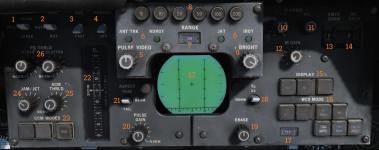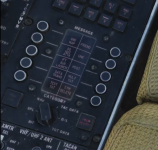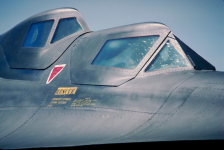The veteran said that when he went through training, he never got any real training for peer-on-peer conflict. "A little bit of talking about it and just a little bit of training, but nothing to the point that would have prepared me for the war in Ukraine," he recalled.
He said that he has seen a lot of Western soldiers struggle in Ukraine as "they already have a set idea about how things should be and everything, and it's just not that way out in Ukraine."
In the US military, he explained, "I believe that a lot of the training that we have is tailored more to fighting in a guerilla warfare nowadays than it is to actually fighting a near-peer adversary like it would be with Russia or China." He said that it is an issue that many NATO members face.
Another American veteran in Ukraine told BI this month that he had similar concerns. He said that his friends still in the US Army ask him for tips on how to fight with drones or in trenches, as they aren't getting training that fully reflects what is happening in Ukraine.
A Ukrainian commander who was trained by US, British, and Polish soldiers said last year that if he had followed those countries' advice exactly, he would have been killed.
Many Ukrainian units used NATO training and tactics when Ukraine launched its counteroffensive last summer, but some of the approaches, such as an overemphasis on maneuver warfare without air support in the face of dense minefields and other daunting barriers, ultimately failed. The Ukrainians then changed their tactics after experiencing serious losses in a switch praised by some war analysts, but it wasn't enough.
Another US Army veteran who has been fighting and training soldiers in Ukraine told BI last year thatUkraine's forces would have been worse off if they had followed US battlefield doctrine.
He said the Ukrainians were actually better at understanding some aspects of modern fighting than the US, though they have also made costly mistakes at times in their execution, but such can be the nature of any war.
….
He said that in many places where he fought in Ukraine, "there is nowhere that is safe," while when he was in Afghanistan and Iraq, if you were half a mile behind the front line, "you could stand outside and have a barbecue, a sandwich, and drink."
Ukraine is fighting in conditions very different from what the US and its NATO allies have fought through in recent decades. And while there is renewed interest in readying for a near-peer or even peer-level fight against an adversary like China or Russia, rebuilding the skills for great power conflict isn't something that happens overnight
Many soldiers have described the war in Ukraine as resembling World War I and II more than any modern conflict, though there are also modern elements like drones and missiles.
It's a comparison the veteran made, too. He said that fighting to clear Russian trenches made him feel like he was "fighting World War I." The overwhelming role of artillery speaks to that as well.

 www.yahoo.com
I try to post these mounting evidences so people understand that NATO/US tactics developed over last 30 years do not work in mass conflict.
www.yahoo.com
I try to post these mounting evidences so people understand that NATO/US tactics developed over last 30 years do not work in mass conflict.
He said that he has seen a lot of Western soldiers struggle in Ukraine as "they already have a set idea about how things should be and everything, and it's just not that way out in Ukraine."
In the US military, he explained, "I believe that a lot of the training that we have is tailored more to fighting in a guerilla warfare nowadays than it is to actually fighting a near-peer adversary like it would be with Russia or China." He said that it is an issue that many NATO members face.
Another American veteran in Ukraine told BI this month that he had similar concerns. He said that his friends still in the US Army ask him for tips on how to fight with drones or in trenches, as they aren't getting training that fully reflects what is happening in Ukraine.
A Ukrainian commander who was trained by US, British, and Polish soldiers said last year that if he had followed those countries' advice exactly, he would have been killed.
Many Ukrainian units used NATO training and tactics when Ukraine launched its counteroffensive last summer, but some of the approaches, such as an overemphasis on maneuver warfare without air support in the face of dense minefields and other daunting barriers, ultimately failed. The Ukrainians then changed their tactics after experiencing serious losses in a switch praised by some war analysts, but it wasn't enough.
Another US Army veteran who has been fighting and training soldiers in Ukraine told BI last year thatUkraine's forces would have been worse off if they had followed US battlefield doctrine.
He said the Ukrainians were actually better at understanding some aspects of modern fighting than the US, though they have also made costly mistakes at times in their execution, but such can be the nature of any war.
….
He said that in many places where he fought in Ukraine, "there is nowhere that is safe," while when he was in Afghanistan and Iraq, if you were half a mile behind the front line, "you could stand outside and have a barbecue, a sandwich, and drink."
Ukraine is fighting in conditions very different from what the US and its NATO allies have fought through in recent decades. And while there is renewed interest in readying for a near-peer or even peer-level fight against an adversary like China or Russia, rebuilding the skills for great power conflict isn't something that happens overnight
Many soldiers have described the war in Ukraine as resembling World War I and II more than any modern conflict, though there are also modern elements like drones and missiles.
It's a comparison the veteran made, too. He said that fighting to clear Russian trenches made him feel like he was "fighting World War I." The overwhelming role of artillery speaks to that as well.

The US spent so much time fighting insurgents that it forgot 'what it means to actually fight a war,' a US vet in Ukraine says
A US veteran in Ukraine said the US has not been sufficiently training for war with a near-peer or peer-level adversary, like Russia or China.















